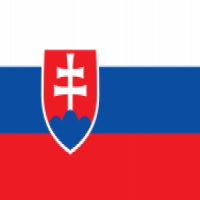Summary:
An established Slovak scientific and research institute in cooperation with a traditional Slovak university have developed a unique system for in vivo isolation of circulating tumour cells from peripheral blood. Its advantage over existing solutions lies in the fact, that this system makes it possible to isolate more CTCs (or other cells present in peripheral blood) than other methods.
The preferred cooperation types are license agreement or financial agreement.
Description:
Each tumour releases cells into the patient's blood or lymphatic system which subsequently enter various parts of the body, creating secondary tumour deposits - metastases. These cells are called circulating tumour cells (CTCs). Their detection in blood has prognostic significance and also allows observing changes in tumour properties in real time. Due to a very low amount of CTCs in the blood, the biological and clinical knowledge of CTCs are strongly dependent on isolation parameters and the technology used to increase the detection success. Existing methods for CTCs detection do not allow a detailed characterization of CTCs, as the amount of isolated CTCs is usually very small. A team of inventors from a Slovak research institute in cooperation with a Slovak university has developed a unique system for in vivo isolation of circulating tumour cells from peripheral blood.
This innovative technology takes advantage of magnetic nanoparticles coated with a monoclonal antibody that are injected into the bloodstream via an intravenous cannula, as well as of a special wire containing a magnetic core coated with a non-magnetic mantle. The advantage over existing solutions lies in the fact, that this system makes it possible to isolate more CTCs (or other cells present in peripheral blood) than other methods. Furthermore, the system allows repeated CTCs isolation from the whole blood volume without blood leaving the bloodstream or sampling it. Compared to systems used for example for separation of hematopoietic stem cells, it is a considerable advantage that the blood does not need to leave the blood stream for isolation of target cells, and thus no anticoagulant drugs need to be administered to the patient, which reduces the risk of complications and undesired effects on the patient. The principle of isolation of circulating cells from peripheral blood according to this unique solution is as follows: Magnetic nanoparticles coated with a monoclonal antibody are injected into the vein through a venous cannula, while their position is controlled using magnets. The nanoparticles are exposed to circulating tumour cells. After in vivo incubation the nanoparticles are moved closer to the venous cannula by the movement of large magnets and a special wire comprising a magnetic core coated with a non-magnetic mantle is inserted through the cannula into the blood stream. Large magnets are removed and nanoparticles are attracted by the magnetic wire. Magnetic wire coated with nanoparticles with attached CTCs is removed from the cannula and placed in a test tube with a suitable medium. The magnetic core is removed and the nanoparticles with attached CTCs are released into the medium for further analysis.
The institute and the university are looking for partners to cooperate with via license agreement or via financial agreement.
Type (e.g. company, R&D institution…), field of industry and Role of Partner Sought:
Type: company (industry)
Field of activity: especially molecular diagnostics of cancer and personalized medicine.
Role: License agreement - a partner for licensing of this technology is sought
Financial agreement - an investor into this technology is sought.
Stage of Development:
Concept stage
Comments Regarding Stage of Development:
TRL2 - technology concept and/or application formulated.
IPR Status:
Patents granted
Comments Regarding IPR Status:
- Granted European patent validated in Germany and France
- Granted Slovak patent
External code:
TOSK20210316005








